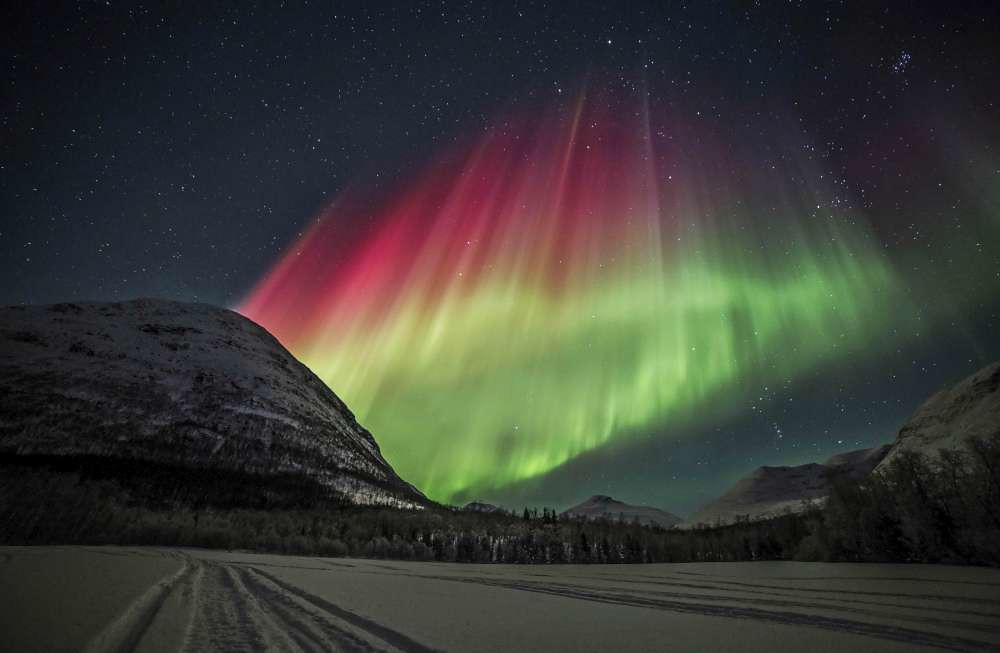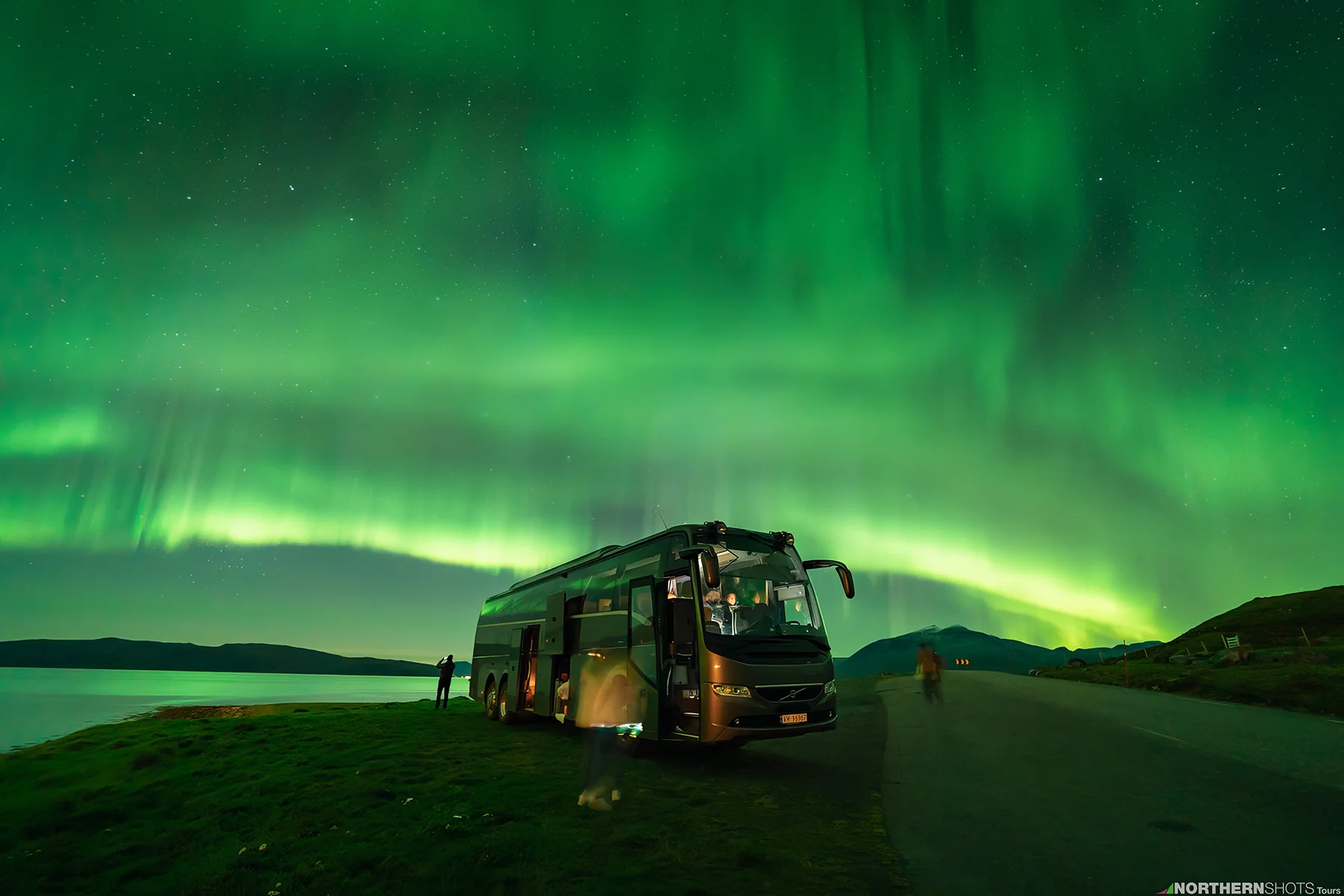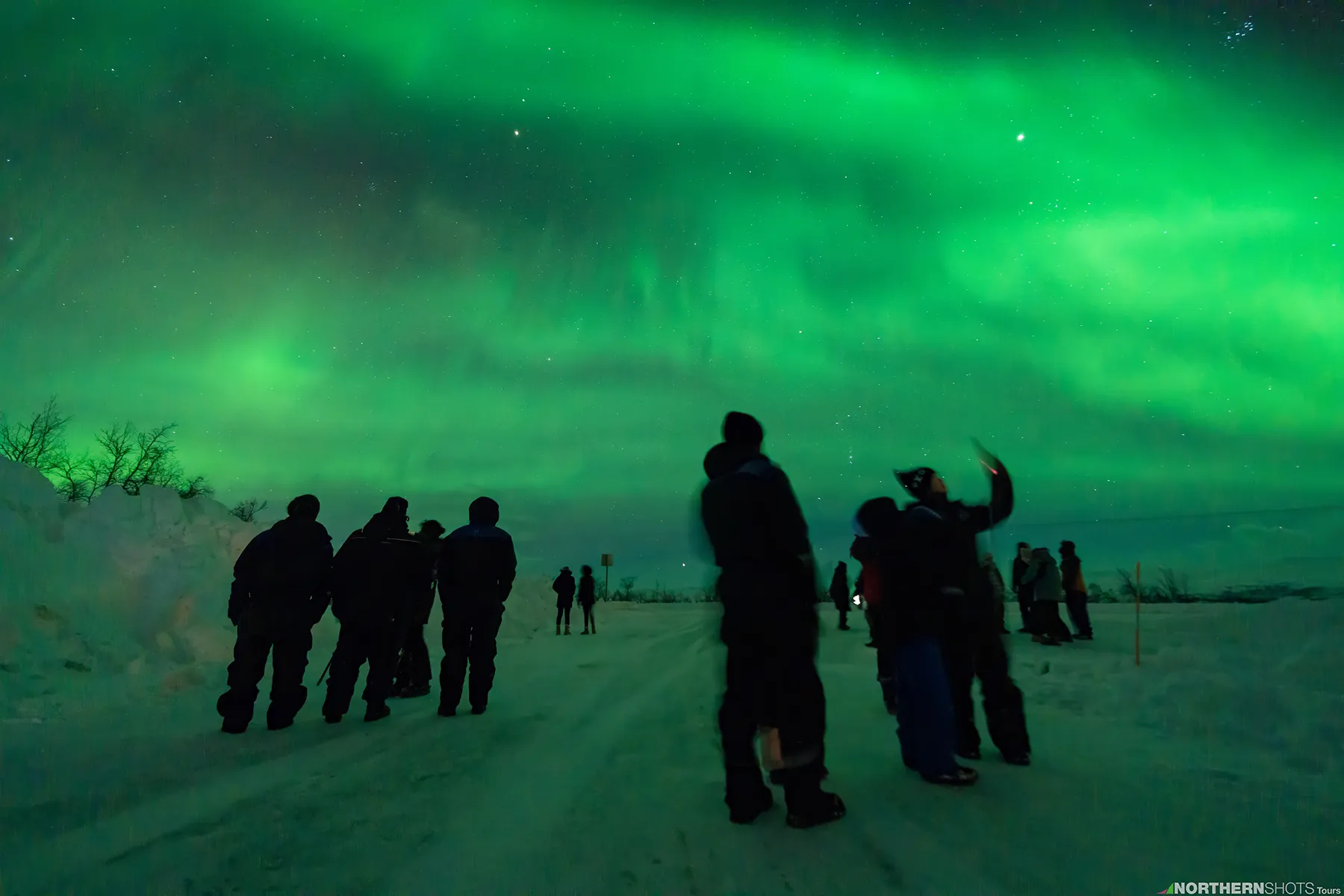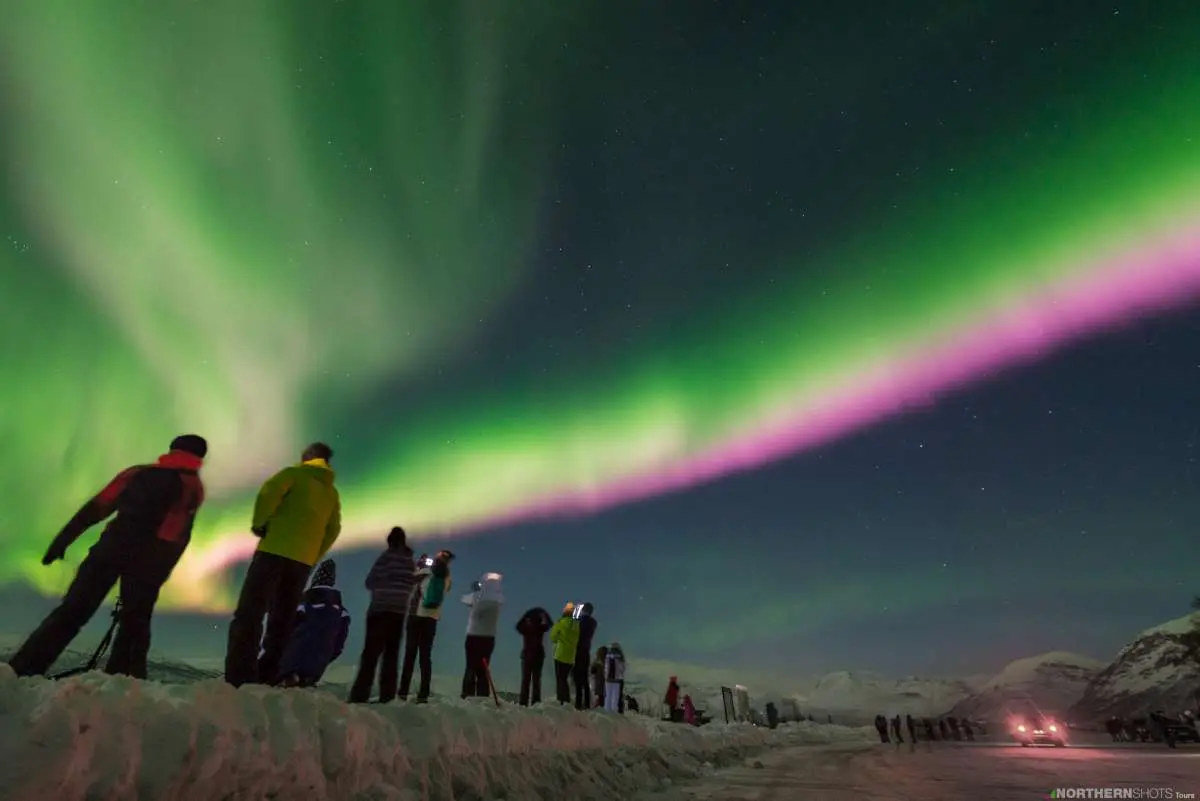How Long Do We Chase the Lights?

Photo by NorthernShotsTours
One of the most common questions our guests ask before joining a Northern Lights chase in Tromsø is: “How long will we be out?” It’s a fair question, and after all, we’re heading into Arctic darkness, sometimes driving through snow and fjords, with only one mission: to find that shimmering green dance across the sky. But the answer isn’t just about hours on the road. It’s about understanding when and where the aurora appears, and how to balance the science of the sky with the comfort and safety of everyone chasing it.
Tromsø’s Unique Position Under the Aurora Belt
To understand the length of an aurora chase, we first need to look up. Way up. Tromsø sits at about 69° north, right under what’s known as the auroral oval or aurora belt. This belt is a ring-shaped zone around the geomagnetic pole where auroral activity is most frequent. While the belt constantly shifts and pulses with solar activity, it passes over Tromsø roughly between 18:00 and 02:00 local time.
That means most of the time when the northern lights are visible, they appear somewhere in that eight-hour window. Earlier in the evening, the belt may still be to the north of Tromsø, while by midnight or later, it can drift southwards. This natural rhythm explains why most Northern Lights tours begin around 18:00–20:00: that’s when we’re moving into the prime viewing hours.

Photo by NorthernShotsTours
Why We Don’t Chase After 02:00 AM
Some guests are surprised when a chase ends around 01:00 or 02:00, especially on clear nights. “Shouldn’t we stay longer, just in case?” they ask. The truth is, after about 02:00 AM, Tromsø has usually drifted out from directly under the aurora belt. The probability of a bright display decreases sharply as the belt moves south.
Yes, auroras can appear later. The northern lights are ultimately controlled by solar winds, which don’t keep to human schedules, but statistically, the chances drop significantly after 02:00. That means hours of waiting might yield nothing new. A good aurora chase is about being in the right place at the right time, not just staying out as late as possible.
By 02:00, our guests have usually had several hours of active searching, photo stops, and hot drinks under the Arctic sky. For most, the experience feels complete by then, and it’s the perfect balance between adventure and rest. After all, Tromsø’s winter nights are long enough as they are!
Why Chasing Until 06:00 AM Doesn’t Make Sense
Every now and then, someone suggests, “Why not make an extra-long chase? What if we stay out until morning?” On paper, it sounds like a way to increase your chances, but in practice, it doesn’t work that way.
After 02:00, not only has the aurora belt usually moved south of Tromsø, but conditions start to shift in other ways. The temperature drops sharply, fatigue sets in, and road conditions can become worst. Safety for both guests and guides, must always come first.
Moreover, the hours between 03:00 and 06:00 are statistically the most quiet for auroral activity around Tromsø. Even if there’s a brief burst of solar energy, it’s rarely strong enough to justify keeping guests awake in the cold for several extra hours. A well-planned chase that maximizes the high-probability window between 18:00 and 02:00 is almost always more rewarding than an exhausting all-nighter.

Photo by NorthernShotsTours

Photo by Marek
The Art of the Chase
A Northern Lights chase isn’t just a bus ride, it is a guided journey through weather patterns, mountain passes, and microclimates. Tromsø’s location between the coast and inland valleys makes it ideal for finding clear skies. On any given night, clouds can cover the city, while just an hour’s drive away, the stars shine bright over frozen lakes.
Our guides use satellite data, live weather maps, and years of local experience to decide where to go. Sometimes that means heading toward the Finnish border, other times staying close to the fjords. The length of the chase depends on how far we need to travel to find clear skies, but once we find them, we stay until the magic happens.
The Human Side of Timing

Photo by NorthernShotsTours
It is also important to remember that a Northern Lights chase is not only about science. It is also about people. Guests join us from all over the world, often after long flights and packed travel schedules. Staying out all night might sound adventurous at first, but fatigue can dull the experience. The best aurora memories are made when you’re alert enough to truly take it in: when you can stand quietly under the stars, camera ready, and feel the silence of the Arctic as the sky begins to glow.
By the time the clock nears 02:00, most guests are happily tired, filled with excitement and photos to share. And that’s exactly how a night under the aurora should end: on a high note, not in the blurry hours before dawn.

Photo by NorthernShotsTours
The Perfect Duration: A Balance Between Nature and Comfort
In short, our chases are designed to follow nature’s schedule, not ours. The Northern Lights don’t need us to stay out until sunrise to appear. They usually perform their best show between early evening and around 01:00 or 02:00 AM. Beyond that, we’re more likely to find darkness than dancing lights.
So, when you join an Aurora Chase with NorthernShots in Tromsø, know that the timing is deliberate. We go when the aurora is most likely to shine, and we stop when the night has given us its best. That’s how we make sure every chase feels magical, memorable, and just the right length.
Remember to claim your second chance to chase in case it applies on your ticket.


